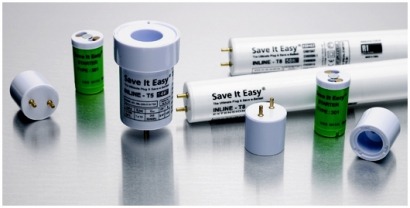
The Energy Efficiency Directive is designed to deliver 20% savings in energy by 2020. But weaknesses in the draft mean it will fail to deliver these savings, causing the EU to miss its target for energy efficiency. This assessment is confirmed by internal analysis by the European Commission which is responsible for the plan.
Brook Riley, climate justice and energy campaigner for Friends of the Earth Europe, commented: “Frankly, the European Commission is fooling itself if it believes the energy efficiency directive will deliver the 20% savings target. Its own internal analyses show that only a binding target will suffice. Instead of showing leadership the European Commission is giving in to industry scaremongering and pandering to the lack of understanding among national governments. This directive is set up to fail. ”
The EU’s Energy Efficiency Directive was also met by disappointment by the European Alliance to Save Energy (EU-ASE), an alliance of prominent business leaders, politicians and campaigners. The President of EU-ASE, Monica Frassoni, described the directive as “half-hearted” and said the European Commission did not fulfil its commitment to replace binding targets with binding measures and “has missed out a huge opportunity to save significant amounts of energy and money – at a time when we need both the most”.
Technology there, policy must follow
She added; “In the next months, we will support the European Parliament and the most progressive members of the European Council in their effort to strengthen its provisions in terms of targets and concrete measures. The technologies exist, business is asking for regulation and they are ready to invest; it’s a policy maker’s dream. I cannot understand why the EU continues to keep Energy Efficiency in the sidelines of European policy”.
An impact assessment of the directive prepared by the European Commission identifies a binding EU-wide target as a condition for successfully meeting the energy savings target. It also recommends strong binding measures, which the current draft excludes.
Meeting the EU’s current 20% energy efficiency target for 2020 would cut annual greenhouse gas emissions by 740 million tonnes, create up to 2 million new jobs, slash dependence on energy imports and save over €1000 per year per household [1]. A strong directive would also enable the phase out of dangerous nuclear reactors without having to replace them with CO2 intensive coal or gas plants [2].
"Tough action to meet the EU's 20% energy savings target could mean a total phase-out of nuclear energy and a 50% reduction in our use of coal. The safest, cleanest energy is that which a country doesn’t need to use. Done correctly, efficiency is the key to a sustainable energy system,” suggested Brook Riley.
Directive alone not the answer
The European Environment Bureau (EEB) also warned that stronger policy action was needed in view of the fact that Europe is expected to miss its 20% energy savings target for 2020 by about half, and that the Directive alone would not get the EU back on track to that target.
“There is huge potential right under our noses to save massive amounts of energy and we are pleased the Commission is finally beginning to see the benefits that savings bring to our society and economy. However, this Directive still lacks decisive, immediate action with binding targets and the scope and ambition necessary to start achieving our energy savings goals,” said EEB’s Catherine Pearce.
EEB warned that the Directive falls short of proposing a binding energy savings target and in doing so fails to stimulate stronger, broader commitment across all sectors and to catalyse changes in thinking and behaviour.
The lynchpin of the package, the Energy Efficiency Obligation Scheme, sets a savings target on ‘all energy distributors or all retail energy sales companies’, based upon a percentage of their market share.
However, the EEB says the scheme as it is proposed lacks a clear definition and is limited in scope, missing out on other vast potential of savings, including deep renovations of the existing buildings
Notes:
[1] Communication “Energy Efficiency Plan 2011”
[2] Eurostat 2010: nuclear energy represents 241 Mtoe per year. Meeting the EU’s 20% energy savings target would save 368 Mtoe per year by 2020
For additional information:

